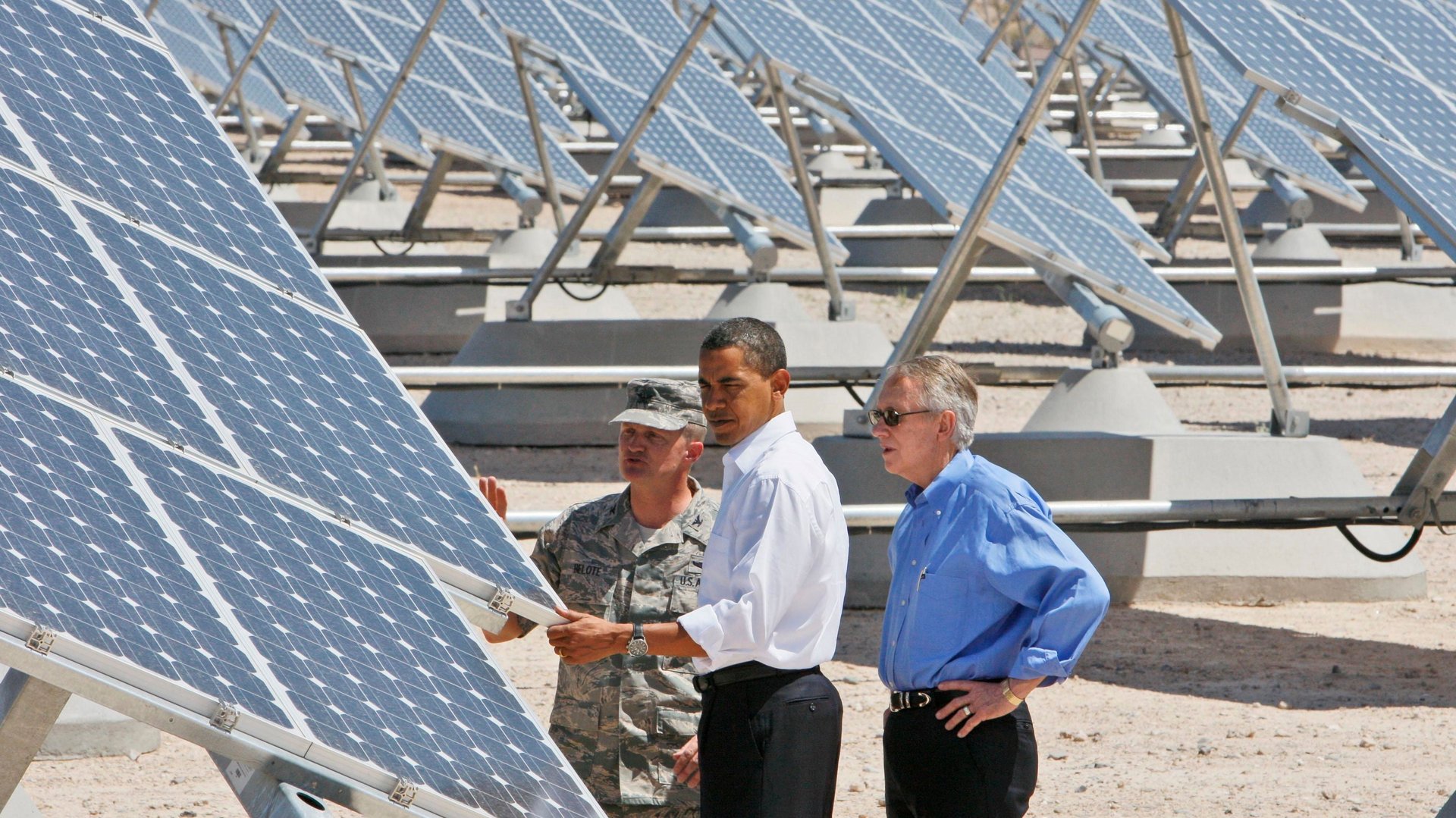You can now make money helping the US military convert to solar power
The US military has ambitious plans—$7 billion worth—to install renewable energy at bases and other facilities across the nation. American taxpayers, of course, are footing the bill. But now they can choose to put their money into a military solar project and make a return, thanks to the crowdfunding craze.


The US military has ambitious plans—$7 billion worth—to install renewable energy at bases and other facilities across the nation. American taxpayers, of course, are footing the bill. But now they can choose to put their money into a military solar project and make a return, thanks to the crowdfunding craze.
Mosaic, a California startup that earlier this year began letting ordinary investors put in as little as $25 to help finance commercial rooftop photovoltaic arrays, today announced its first military-related project, a 12.3-megawatt (MW) installation that will put 55,189 solar panels on housing at Joint Base McGuire-Dix-Lakehurst in New Jersey. The panels will be installed on 547 homes and are expected to supply 30% of their electricity demand.
The deal is significant on two fronts. Military bases represent a huge market that will help drive down the cost of solar energy through economies of scale. Silicon Valley’s SolarCity, for instance, scored a $1 billion deal in 2011 to finance and install 371 MW of photovoltaic panels on military housing in 30 states. Second, the deal marks a new way to finance solar energy. As lucrative US tax breaks for solar and wind projects fall from 30% to 10% at the end of 2016, they will become less attractive to big banks and corporate investors currently bankrolling commercial and residential solar projects.
Enter the mom-and-pop investor.
The housing at Joint Base McGuire-Dix-Lakehurst is owned by a private contractor and leased to the military. Working with bank holding company CIT and True Green Capital Management, a New York investment firm, Mosaic will initially offer investors the opportunity to finance $250,000 of the $13 million project with the option to increase that amount to $3 million, according to the prospectus.
Here’s how it works: Investors sign up at Mosaic’s site and then peruse the prospectuses of available projects. If they find one they like, they invest through a bank transfer. No money is transferred if a deal isn’t fully financed. (It’s like a Kickstarter project in that sense.) The developer pays back the loan, with interest, from income generated by the monthly sale of electricity to its customers. Mosaic takes 100 basis points of the interest rate, plus an origination fee and annual platform fees, and passes the rest to investors.
The return on military solar investment is the one-month Libor rate plus 2.25% to 2.5% . As of today, that return on investment would be 2.43% to 2.68%, considerably lower than 4.5% return Mosaic has offered investors in some of its other commercial projects. Mosaic spokeswoman Katie Ullmann told Quartz that that its partner CIT preferred to use the Libor rate but that upcoming Mosaic projects would offer returns in the 4.5% to 7% range. Still, the military solar project beats by far the rates on a one-year certificate of deposit (a fixed-term savings account), currently hovering around 1%.
How did a startup that’s been crowd-funding solar projects for only nine months score such a deal? Mosaic president Billy Parish told Quartz that it came about through past work with CIT by Greg Rosen, the company’s chief investment officer. Rosen “had worked on a number of military projects prior to coming to Mosaic, including Nellis Air Force Base, which was the largest solar project in the country when it was built in 2006,” Parish said in an email.